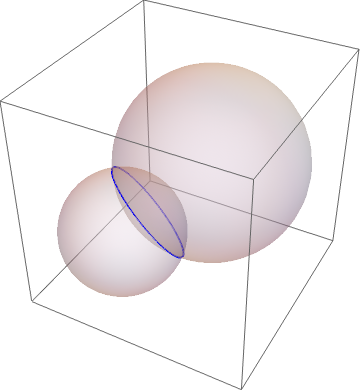I am trying to obtain a list of coordinates at which two spheres intersect.
Take for example the spheres: sp1=Sphere[{0, 0, 0}, 1]
and
sp2=Sphere[{1, 1, 1}, 1.5]
When I Plot them it is clear they intersect, but i cannot retrieve the coordinates.
So far I Tried finding them by looking for the nearest or RegionNearest between RandomPoint[Sphere[{0, 0, 0}, 1], 1000] and RandomPoint[Sphere[{1, 1, 1}, 1.5],1000]. Nor did it work by looking for Intersection of the two list (since no coordinates actually matched)
I also tried to look for the minimal euclidean distance between all points and the positions of those minimal distances, but in that case my computer crashes.
Can somebody help? Thanks in advance






